modern history
Archive for the ‘Modern(ish)’ Category
Still no takers for the Villa Aurora
Monday, April 11th, 2022
Villa Aurora, the 16th century mansion in one of Rome’s most expensive 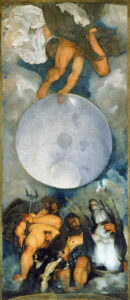
The villa was listed for €471 million when it was first put up for auction in January, an astronomical sum based on the valuation of art experts. The Caravaggio alone could easily run a hundred million plus even if it weren’t attached to a whole villa, so the exorbitant price tag didn’t seem incongruous. There were no takers, however, not even lowball opening bids. Total radio silence.
A second auction was scheduled for Thursday, April 7th, and this time the price would drop 20% to €377 million. Even at a discount, the Villa Aurora failed to attract a single bid, so the quarrelling heirs of the late Prince Nicolò Boncompagni Ludovisi are going to have to take it to the auction mattresses again on June 30th when the villa will be offered at auction for another 20% drop in price to €301 million. If there are STILL no takers at that point, the widow Princess Rita Boncompagni Ludovisi and the prince’s three sons from a previous marriage will have to agree to ANOTHER price drop.
The problem is that the American-born princess does not want to sell. Prince Nicolò’s will granted her lifetime rights to live on the property as long as she wanted to, and should she choose not to, Villa Aurora was to be sold and the proceeds divided between his wife and sons. The Boncompagni Ludovisi sons contested the will, disputing her lifetime right of occupancy, and a court decision forced the sale.
So the four parties who are responsible for negotiating a new price if June’s auction fails to attract bidders are not exactly on the same page here. Should they be unable to come up with a lower figure for the fourth bite at the apple, the judge will step in and decide the price.
According to Beniamino Milioto, the princess’s lawyer, interested parties will have to put down a 10% deposit to qualify to bid, plus proof of enough assets to close the sale and complete a restoration plan said to cost at least €10m.
Milioto said that while there had been multiple informal expressions of interest, including from Microsoft’s Bill Gates, nobody had completed the process of qualifying to bid for either round.
The villa and its property are under the protection of Italy’s ministry of culture, meaning that when a qualifying bid is filed, the Italian state will have a chance to match the price and turn the villa into a cultural site. A petition calling for this to happen has attracted more than 35,000 signatures, a level that requires the cash-strapped Italian government to consider the acquisition. But there is no indication a state purchase is in the works.
Whoever acquires the 40-room villa will become owner of a vast collection of art that goes beyond Caravaggio’s 2.75-metre fresco of the gods Jupiter, Neptune and Pluto. Its gardens include a sculpture by Michelangelo, and in the villa are other ceilings featuring frescoes by the baroque master Guercino and a spiral staircase created by the 16th- and 17th-century architect Carlo Maderno, best known for designing the facade of St Peter’s Basilica.
The villa also includes a telescope given to the Ludovisi family by Galileo and a door that was once part of an ancient Venetian warship.
BRB. Off to buy a Powerball ticket.
17th c. polychrome wall paintings found in salt castle
Thursday, April 7th, 2022
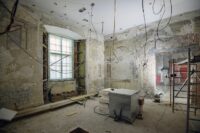

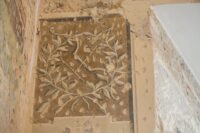
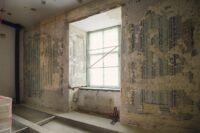
“The preserved layers, from different periods, intertwine; in some places they are preserved only in small fragments, and in some – in large ones “- emphasized the conservator. “We plan to expose all layers to show them as the history of this object. If such possibilities arise and such a decision is made, we can possibly remove some of the outer layers – this is called a transfer, transfer to a new substrate – and display them in a different part of the castle , wherever the available exhibition space will allow it “- explained Chojkowski.
The “delamination” method allows the reconstruction of a larger area of earlier polychromes. “The fact that one of them is younger does not mean that it has a lower value, because it can be much more interesting. For us, partial removal or transfer of layers to a new substrate is so important that there are probably even earlier plasters here. now it is difficult to say whether there is also any layer of polychrome there “- said the conservator.
Update: stolen Darwin notebooks returned in hot pink gift bag
Wednesday, April 6th, 2022

Happy Easter
X
The two notebooks have been carefully examined and are in excellent condition, thankfully. There are no missing or damaged pages.


The appeal made the news around the world, and obviously it worked because somebody’s small conscience grew three sizes that day and the notebooks are back where they belong. This time they should stay put, at least if Cambridge University Librarian Dr. Jessica Gardner has anything to say about it:
“The building has transformed significantly since the notebooks were first reported as missing. In the last 20 years this has included completion of new high security strong rooms, new specialist reading rooms and a range of additional security measures.
These include CCTV, card-and-pin access to secure areas, a dedicated Security Team onsite and further root-and-branch reviews of all our security protocols to come – to make sure we minimise any future risk as far as humanly possible.”
Police are continuing to investigate the theft and now the return of the notebooks. The prodigal notebooks will go on public display this summer in Darwin in Conversation, a Cambridge University Library exhibition dedicated to Darwin’s extensive correspondence of 15,000 letters written over a lifetime.
Visit Henry III’s toilet at restored Clifford’s Tower
Thursday, March 31st, 2022
Clifford’s Tower in York is the only structure remaining from York Castle. 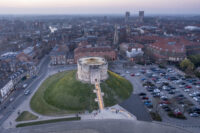
The present Clifford’s Tower was constructed on the ashes of this tragedy. Reconstruction began in the early 13th century, but the new stone keep would not be completed until the end of the century. York Castle would mainly be used for administrative purposes — prison, mint, briefly as headquarters of the Exchequer — not as an actual royal residence. It was not well-maintained. Accounts from the 15th century already report some of the buildings were in ruins, and there was a scandal in the 1590s around the gaoler of the castle purportedly trying to demolish the tower to sell the stone.
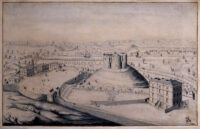
Finally it became property of the state in the 1915 and it was repaired and stabilized in the 1930s so it could be opened to the public for the first time in centuries. It was sort of a look-in attraction, however, a 15-minute visit at most to walk up the stone circular staircase to see some great views of York, including the Minster. There was no signage to speak of, limited information panels, and nothing to do inside but look up at the sky.
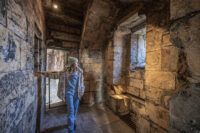
The new interior and roof deck at Clifford’s Tower has been designed by Hugh Broughton Architects, a leading contemporary architectural practice. Supported by four slender wooden columns, the ingenious structure sits on a raft foundation, which spreads the load without impacting on the archaeological remains beneath the tower. The practice has worked closely with conservation specialists Martin Ashley Architects to produce a scheme which sits respectfully within the heritage structure.
New interpretation will help place the tower in the context of both the historic York Castle and the city of York itself as well as introducing visitors to the tower’s long and turbulent history. Visitors can explore the castle’s founding by William the Conqueror, the tower’s role as the site of the tragic 1190 massacre and suicide of York’s Jewish community – one of the worst anti-Semitic episodes in English history – and the role of the castle as both a medieval royal stronghold and a garrison during the Civil War.
Integral to the new scheme is its soundscape. Layers of background sound will take visitors back in time, allowing them to experience the tower as it would have been at various periods in its long history. Visitors can engage with five key moments in that history with the help of the voices of local residents who bring the stories of fictional characters to life, each representing a different chapter in the tower’s past.
Clifford’s Tower reopens Saturday, April 2nd. Here’s some cool drone footage of the new roof deck:
Versailles restores Royal Tennis Court as Museum of the Revolution
Wednesday, March 30th, 2022
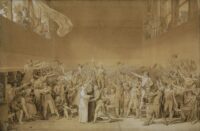
Deputy Jean Joseph Mounier proposed that in response to this insult to their rights, the nation’s representatives take a solemn oath in defense of the public good and national interest. The proposal was received with thunderous applause and the Assembly quickly drew up a decree:
The National Assembly, considering that it has been called to establish the constitution of the realm, to bring about the regeneration of public order, and to maintain the true principles of monarchy; nothing may prevent it from continuing its deliberations in any place it is forced to establish itself; and, finally, the National Assembly exists wherever its members are gathered.
Decrees that all members of this assembly immediately take a solemn oath never to separate, and to reassemble wherever circumstances require, until the constitution of the realm is established and fixed upon solid foundations; and that said oath having been sworn, all members and each one individually confirm this unwavering resolution with his signature.
The deputies then each “signed” by swearing:
We swear never to separate ourselves from the National Assembly, and to reassemble wherever circumstances require, until the constitution of the realm is drawn up and fixed upon solid foundations.
This was the first direct confrontation between the revolutionaries and the king. They were still on board with a monarchy, but only as bound by the will of the people. By this oath they declared to Louis XVI that the National Assembly was in service of the public and national good, not the king.

Unfortunately for David, the France of 1791 was very different from that of 1789. Constitutional monarchists were very much not in favor anymore and many of the 1789 heroes were either fired, disgraced or, well, dead, by 1791. The subscription model failed because the public had no interest in celebrating the event. David never finishing the painting and kept it in his workshop until his death in 1825. The unfinished work was cut up into three pieces by his heirs. The largest portion was sold to the state and is now on display in the Chimay attic at Versailles.
The Tennis Court itself became property of the state in 1793 and was closed to the public in 1798. It was used for random purposes — storage, workshop, painter’s studio — for a while and listed as a national historic monument in 1848. Come the Second Empire, the Royal Tennis Court was neglected, its associations no longer appreciated by the powers that be.
The idea of celebrating the Tennis Court Oath came back into favor a century later under the French Third Republic which embraced its revolutionary antecedents. In 1880, July 14th, Bastille Day, was declared the French National Celebration, and the government began to plan for a museum of the Revolution. In 1882, the old Royal Tennis Court, abandoned for decades by that point, was chosen as the spot for the new museum.
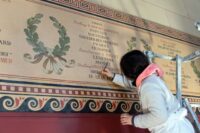
This new vision of the Royal Tennis Court also faded quickly. After the centenary of the oath in 1889, the court was just maintained but not handled with the care it required. There was even talk in the 1930s of converting it into a ping pong room for Senate functionaries who worked at Versailles.
Last year, Versailles undertook a comprehensive restoration program to return the Tennis Court to its 1883 condition when it was reborn as the Museum of the Revolution. Over eight months of work, restorers were able to restore the black cement floor, the Pompeian red wall paint, the names and laurel wreaths and decorative borders on the band, and Merson’s monumental painting.
The room is reopening on Friday after eight months of work, giving the public “a forgotten part of our history,” Catherine Pegard, president of the palace’s public administration, told AFP.
It is dominated by a monumental canvas, also restored, which was based on the famous unfinished work by Jacques-Louis David depicting the signing of the oath.
Largest starfish offering found at Templo Mayor
Saturday, March 19th, 2022
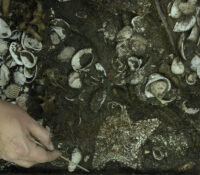
Offering number 178 was discovered late last year in the circular building known as the Cuauhxicalco, described in 16th century accounts as the place where the rulers of Tenochtitlan were cremated. It is the largest ritual offering ever discovered in the Templo Mayor precinct, combining symbolic elements of earth and water, like the remains of a female jaguar armed with an atlatl (spear-thrower) and large numbers of marine organisms including coral, puffer fish, snail shells and the aforementioned starfish.
Stratigraphy places the offering in the sixth stage of construction, dating it to around 1500, the end of the reign of great military leader Ahuitzotl and the beginning of the reign of his successor Moctezuma Xocoyotzin. This was the last hurrah of the Aztec Empire before the arrival of the Spanish.
During the government of Ahuízotl, the Mexicas established trade routes, along with their military expansion in various parts of Mesoamerica, hence the presence in Tenochtitlan of corals brought from the Gulf of Mexico, starfish from the Pacific Ocean, and a female jaguar that could have been brought from distant regions such as Soconusco, a territory located between what is now Chiapas and Guatemala.
Based on historical sources, such as the Matrícula de Tributos , and previous findings, PTM archaeologists are clear that the offering is related to war, not only because of the atlatl that the jaguar carried in a claw, but because of its location in the Cuauhxicalco, building aligned with the southern side of the Templo Mayor, consecrated to Huitzilopochtli, god of war.
Báez Pérez explains that in their worldview, the Mexica related starfish and jaguars with the night sky and the night, this feline being an image associated with the god Tezcatlipoca, in his nocturnal representation.
“A good part of the Mesoamerican peoples believed that the origin of the world was linked to the sea, therefore, marine organisms were treated as relics. In the case of the Mexicas, their military power allowed them to bring thousands of marine objects and recreate an entire aquatic environment in Tenochtitlan itself.”
The offering is so complex and dense that archaeologists are still recovering all of its elements, fragment by fragment, so they can be analyzed in laboratory conditions. The final count of starfish may well rise even higher. Archaeologists believe perfectly-preserved starfish was placed in the offering pit first on a layer of fiber. The weight of the jaguar and copious other offerings then pressed the fellow into the fiber and kept the organic matter from decomposing as it did for the other 163 starfish. It is still in situ while the team determines how best to remove it en bloc to ensure both it and the sediment on which it was found come out together.
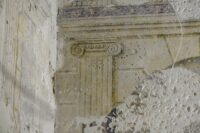
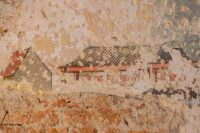


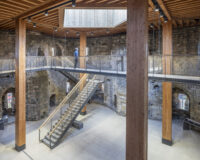
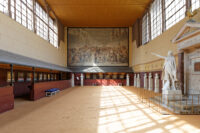
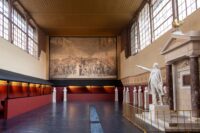
Comments
Post a Comment